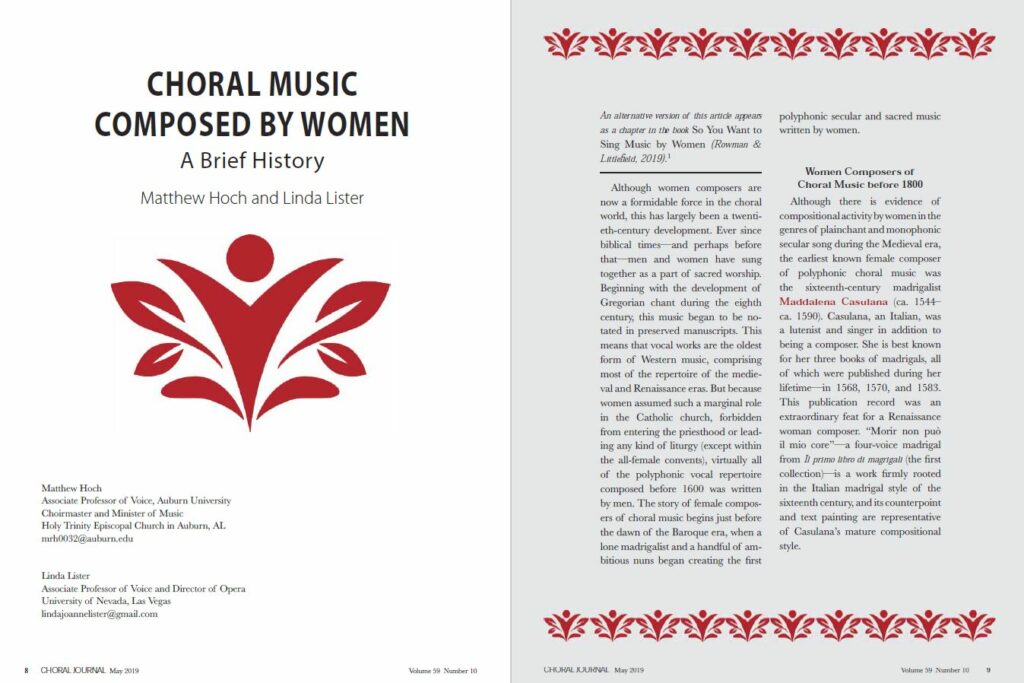
The May issue of Choral Journal is now available online! The cover article for this issue was written by Matthew Hoch and Linda Lister and titled “Choral Music Composed by Women: A Brief History.” Below is an excerpt of the article, and you can read it in its entirety in the May 2019 issue! Go to acda.org/choraljournal and click “Search Archives.”
Choose May 2019 from the dropdown menu.
________________________________
Although women composers are now a formidable force in the choral world, this has largely been a twentieth-century development. Ever since biblical times—and perhaps before that—men and women have sung together as a part of sacred worship.
Beginning with the development of Gregorian chant during the eighth century, this music began to be notated in preserved manuscripts. This means that vocal works are the oldest form of Western music, comprising most of the repertoire of the medieval and Renaissance eras. But because women assumed such a marginal role in the Catholic church, forbidden from entering the priesthood or leading any kind of liturgy (except within the all-female convents), virtually all of the polyphonic vocal repertoire composed before 1600 was written by men.
The story of female composers of choral music begins just before the dawn of the Baroque era, when a lone madrigalist and a handful of ambitious nuns began creating the first polyphonic secular and sacred music written by women.
Women Composers of Choral Music before 1800
Although there is evidence of compositional activity by women in the
genres of plainchant and monophonic secular song during the Medieval era, the earliest known female composer of polyphonic choral music was the sixteenth-century madrigalist Maddalena Casulana (ca. 1544–ca. 1590). Casulana, an Italian, was a lutenist and singer in addition to being a composer. She is best known for her three books of madrigals, all of which were published during her lifetime—in 1568, 1570, and 1583.
This publication record was an extraordinary feat for a Renaissance woman composer. “Morir non può il mio core”—a four-voice madrigal from Il primo libro di magrigali (the first collection)—is a work fi rmly rooted in the Italian madrigal style of the sixteenth century, and its counterpoint and text painting are representative of Casulana’s mature compositional style.
*An alternative version of this article appears as a chapter in the book So You Want to Sing Music by Women (Rowman & Littlefield, 2019).
__________________
Read the rest of this article (and more!) in the May issue of Choral Journal, available online at acda.org.

+(1).gif)
Leave a Reply
You must be logged in to post a comment.